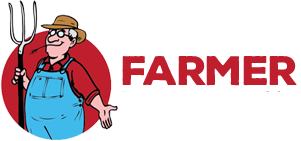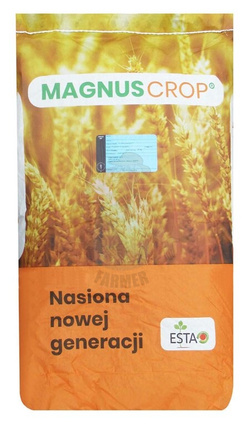- PHR breeding variety. Very high yielding potential - due to its high and stable yield, it has been a yield benchmark in COBORU research for years.
Seed Breeding: PHR
Price for 1/2 sowing unit.
1 sowing unit is for 1/2 ha.
2 units (4 bags) must be sown per 1 ha
Properties:
- Exceptionally high plant health - it works well in both traditional and organic production.
- A very good, well-known and proven variety of population rye. Faithful and high yielding even in weaker positions.
- Very tall plants, resistant to lodging, with an average maturity date.
- Very high protein content in the grain.
- Recommended for organic farming.
- Variety with very good resistance to brown rust and stem rust.
- Plants with low soil requirements, with good tolerance to soil acidity.
- Recommended for cultivation throughout the country.
Utility and agricultural features:
- earing time: medium
- full maturity date: medium
- protein content: 8
- plant height: 166 cm
- lodging resistance: 5.3 good
- soil requirements: poor
- tolerance to soil acidity: good
- MTZ: 31.2 g
- seed density (pcs./m²): 280-320 pcs.
Disease resistance according to COBORU:
- snow mold: 7.8 very high
- powdery mildew: 7.8 high
- stem base diseases: 7.4 high
- brown rust: 7 very high
- stem rust: 8 very high
- rhinchosporiosis: 7.4 average
- leaf septoria: 6.8 average
Agrotechnical cultivation conditions:
soil conditions - Rye can be sown on all types of soil. It has low water requirements and tolerates slight acidification well. Plants do well on weaker soil complexes with IV-VI classification.
Place in crop rotation - Legumes are the best forecrop. Also good oat, which has a phytosanitary effect. Winter rye tolerates cultivation in monoculture well.
Mineral fertilization Rye does not have high nutritional requirements, and depending on the position, abundance, type of soil and forecrop, it requires fertilization:
phosphorus - 50-80 kg P2O5/ha
potassium – 70–100 kg K2O/ha
Nitrogen fertilization - Depending on the forecrop and soil fertility, the dose of nitrogen should be in the range of 80-100 kg/ha in two periods:
1st dose before or at the beginning of vegetation - 40-50 kg N/ha - until intensive growth begins
2nd dose during stem elongation - 40-50 kg N/ha
Winter rye shows low sensitivity to micronutrient deficiencies.
Date of sowing and amount of sowing - Seeds should be treated with preparations available on the market before sowing. The optimum sowing dates for rye in Poland start on September 15 and should last until the end of September at the latest. The plant density for this species is 280-320 plants/m2. The sowing rate oscillates in the range of 90-120 kg/ha - it depends on the MTZ, germination power and sowing date.
Rye
| Odmiana |
Wysokość (cm) |
Wyleganie (1-9) | MTZ | Plon dt z ha |
Mrozoodporność (1-9) |
Reakcja na zakwaszenie (1-9) | |
|---|---|---|---|---|---|---|---|
| Poziom a1 | Poziom a2 | ||||||
| Dańkowskie Hadron | 147 | 5,5 | 32,4 | 71,9 | 80,9 | 4 | |
| Dańkowskie Rubin | 151 | 5,5 | 34 | 67,5 | 76,9 | 5 | |
| Antonińskie | 157 | 5,1 | 33,6 | 69,5 | 80,2 | 5 | |
| Piastowskie | 154 | 5,7 | 33,6 | 71,4 | 81,1 | 5 | |








